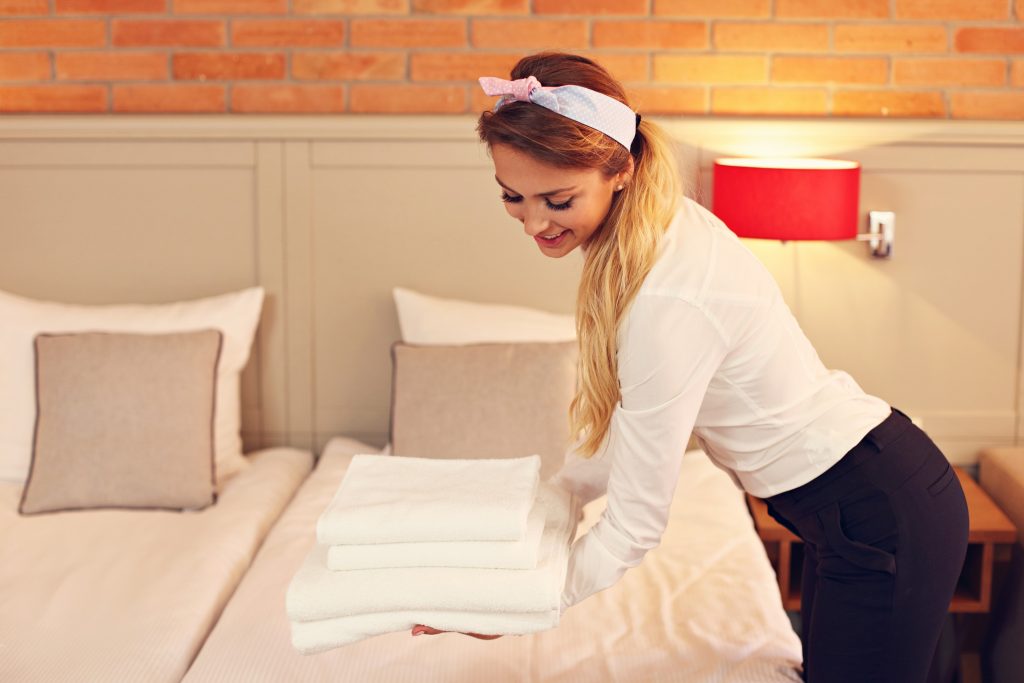Hotel Employee Safety Technology Isn’t One Size Fits All – Here’s Why
by React Mobile, on May 22, 2019 9:10:58 AM

When it comes to the hospitality workplace, the case for enhancing the general, day-to-day wellness of staff is rather obvious. The process of hiring and training new employees consumes valuable time and resources and is undeniably expensive. In an industry that has long been plagued by notoriously high staff turnover rates, hoteliers should feel especially inclined to invest in employee retention. More than that, we are in the business of servicing happy guests. What is the best way to ensure guests remain happy? The guest experience created by happy employees. When employees aren’t happy within their role, it shows – and in the landscape of hospitality and increasing guest expectations, hotels can’t afford a team of dissatisfied employees who feel unsupported by their company. Empowering your employees empowers your service offering – it’s a directly correlated relationship.
Now, this brings us to an important point. When discussing the importance of employee wellness, we arrive at a central consideration: employee safety. After all, the last thing a guest wants to consider is whether or not the hotel is safe enough – for guests or staff, alike. This is an increasingly important, fundamental part of any hotel’s structure. And while there is no shortage of factors that can positively (or negatively) impact an employee’s perception of their employer and satisfaction within their role, one reigns supreme – their safety. Employees expect their employer to provide a safe work environment. One which ensures protection from various hazards (injury, harassment, risks, etc.) – and this isn’t an unrealistic expectation. Rather, it is their right. And yet, hotel employees face arguably more risk across their day-to-day duties than any other profession. Not only are many of the roles undeniably physically demanding, but staff are placed in a vulnerable position when servicing guests and performing their duties behind closed doors. In fact, a recent Chicago study found that women who work in Chicagoland hotels and casinos face a high level of sexual harassment, mainly from male guests. According to the study, 58% of hotel workers and 77% of casino workers surveyed have been sexually harassed by a guest.
In fact, the lack of adequate employee safety measures has become an alarming trend across the industry, with many staff members solemnly accepting this risk as ‘part of the job’. In an effort to remedy this long-standing insufficiency, many of the largest hotel companies in the industry, along with the American Hotel & Lodging Association, are aligning to improve safety conditions in hotels through investments in training and technology, and the 5-Star Promise, with a plan to issue employee safety devices to workers as soon as possible. U.S. hotels aim to have full implementation of panic buttons at all properties by 2020.
However, as with any new technology adoption, hoteliers are now tasked with the selection of an appropriate safety platform, in order to comply with these new standards of care. Is it just a matter of supplying staff with noisemakers? Is that enough? Or do hoteliers need to invest in a more comprehensive solution to ensure their employee’s continued safety?
Quite simply – when it comes to hotel employee safety systems, it isn’t one size fits all. From CRM to PMS and beyond, hoteliers are privy to a choice of various ‘best in class’ options when vetting prospective hotel technology platforms. Why? Because not all technology is created equal, and catering to the ever-evolving needs of modern guests requires more in-depth functionality than a ‘one-size-fits-all’ solution can provide. In the case of employee safety devices (ESDs), the same rules apply. AHLA has convened a sourcing task force to assist companies in identifying the appropriate technology for their respective properties. As hotels continue to evolve, they require more robust platforms to support their operational structure. In the case of employee safety, a simple noisemaker (i.e., ax whistle) could hardly even be considered as a ‘band-aid’ solution. Without location accuracy capabilities to accurately locate the employee in distress, a security officer will have to check various rooms or floors in the general direction of the alert. This lack of accuracy translates to a delay in response which, in some cases, could stand in the way of appropriate intervention. Response time aside, this also entails the disruption of other, paying guests.
Instead, hotels should seek out a dedicated, flexible safety alert platform that allows them to locate employees anywhere on property within seconds of a distress call. Relying on Bluetooth beacon technology that easily integrates with a hotel’s existing platforms, hotels can effectively pinpoint the location of a distress call down to the exact floor and room number. Further, if the employee in distress moves, their location will be updated in real-time.
Of course, every hotel is unique and the platforms they invest in should reflect that. At React Mobile, we built our enterprise safety platforms with precisely this in mind – ensuring our solutions can be customized to each hotel’s respective needs. With various tiers of service, we work with each hotel to not only integrate seamlessly into their existing infrastructure, but also to ensure a completely customized and intuitive safety solution that can scale with their operations. Why? Because we understand that employee safety isn’t one size fits all, and we want to help our customers find the perfect solution to ensure the health, happiness, and safety of your employees – both now and in the future.
Learn more about Why Panic Buttons are the #1 Safety Technology for Hotels in our free eBook:


